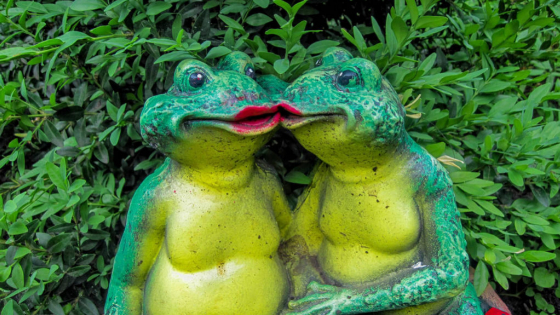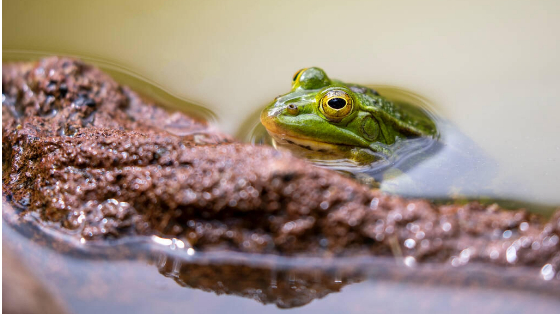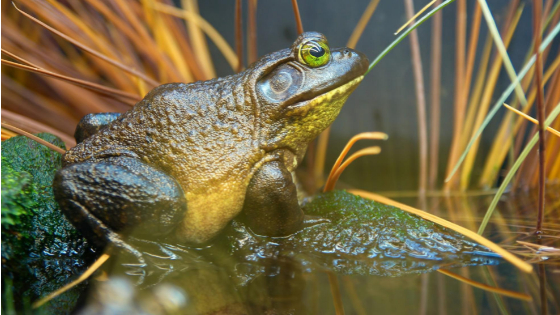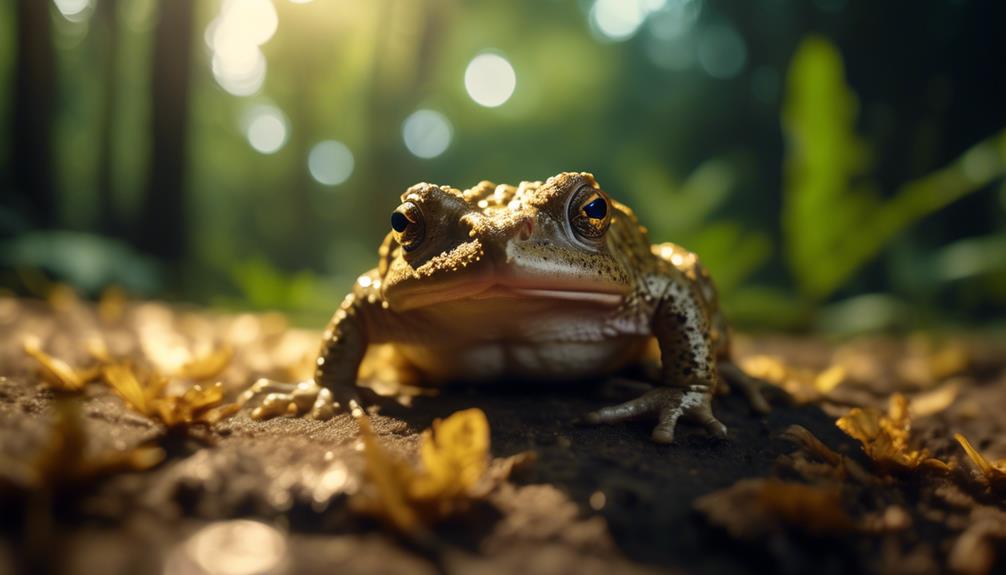
The Asiatic toad, Bufo gargarizans, is a captivating amphibian species found in various regions of China, the Russian Far East, and parts of Japan. Despite its rarity on the Korean Peninsula, this toad’s significance extends well beyond its ecological role.
It has long been a key player in traditional Oriental medicine, with its venom, known as chan-su, holding remarkable medicinal properties. Moreover, dried toad skins have been utilized in medicinal practices. Even Western medical science has taken notice, going as far as patenting an antimicrobial peptide extracted from the toad’s body.
In this article, we will explore the miraculous medicinal secrets of the Asiatic toad, shedding light on its therapeutic potential and its intriguing relationship with humans.
Key Takeaways
- The Asiatic toad is found in various regions of China, the Russian Far East, and parts of Japan, preferring humid areas and avoiding dense forests.
- Traditional Oriental medicine reveres the toad for its medicinal properties, with its venom known as chan-su believed to possess potent healing properties.
- The toad venom, known as chan-su, has been used in traditional Chinese medicine to treat ailments such as cancer, heart disease, and skin disorders, and scientific research has identified bioactive compounds in the venom with anticancer and cardiotonic effects.
- Dried toad skins are used in traditional medicine for respiratory disorders, skin diseases, and pain relief, believed to have anti-inflammatory, analgesic, and antimicrobial properties. Western medical science has shown interest in the medicinal potential of dried toad skins and is conducting research on their effectiveness as well.
Distribution and Habitat
The Asiatic Toad (Bufo gargarizans) is commonly found in various regions of China, portions of the Russian Far East, and the Miyako Islands of southern Japan. In China, it can be found in provinces such as Anhui, Fujian, Gansu, Guizhou, Hebei, Heilongjiang, Henan, Hubei, Hunan, Inner Mongolia, Jiangsu, Jiangxi, Jilin, Qinghai, Shaanxi, Shandong, Shanxi, Sichuan, and Zhejiang.
It is also found in parts of the Russian Far East, including the Amur River valley, Sakhalin Island, and Transbaikalia in Siberia. However, it is relatively rare on the Korean Peninsula and has been extirpated from some islands, possibly including Okinawa.
The Asiatic Toad prefers humid areas and avoids dense forests. Its distribution and habitat play a significant role in understanding its population dynamics and conservation needs.
Traditional Oriental Medicine
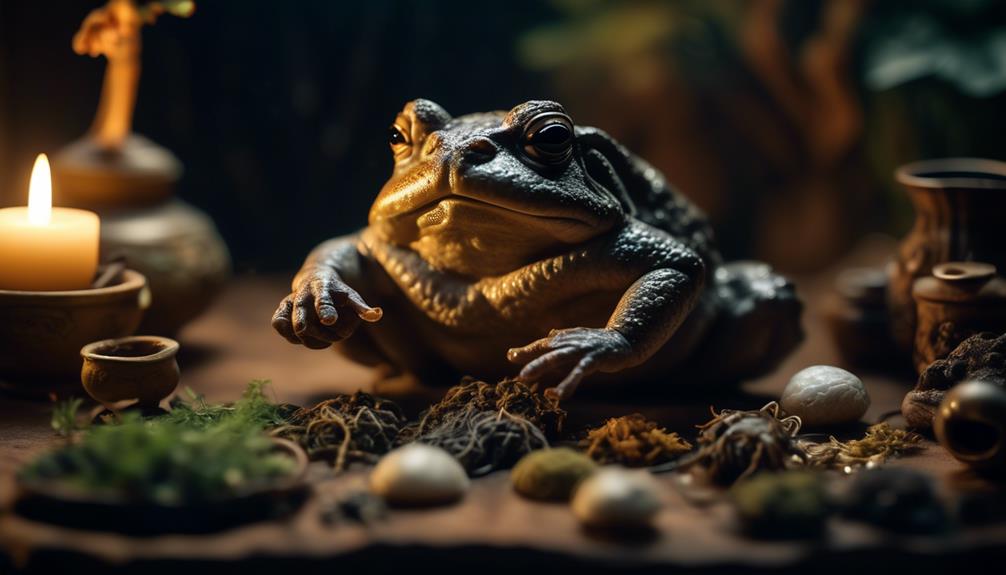
With its important role in traditional Oriental medicine, the Asiatic Toad (Bufo gargarizans) has long been revered for its medicinal properties. In this ancient practice, the toad is highly valued for its venom, known as chan-su, which is believed to possess potent healing properties. Dried toad skins are often prescribed as remedies for various ailments. Western medical science has also shown interest in the toad, with researchers extracting an antimicrobial peptide from its venom, which has been patented for potential medical applications. The table below summarizes the key aspects of the Asiatic Toad’s role in traditional Oriental medicine:
| Traditional Oriental Medicine | Asiatic Toad (Bufo gargarizans) |
|---|---|
| Role | Important |
| Venom | Chan-su |
| Medicinal properties | Potent |
| Remedies | Dried toad skins |
| Research interest | Western medical science |
| Extracted peptide | Antimicrobial |
| Patented | Yes |
The Asiatic Toad continues to be a fascinating subject in the field of traditional Oriental medicine, with its potential for providing valuable medicinal treatments.
Medicinal Properties of Toad Venom
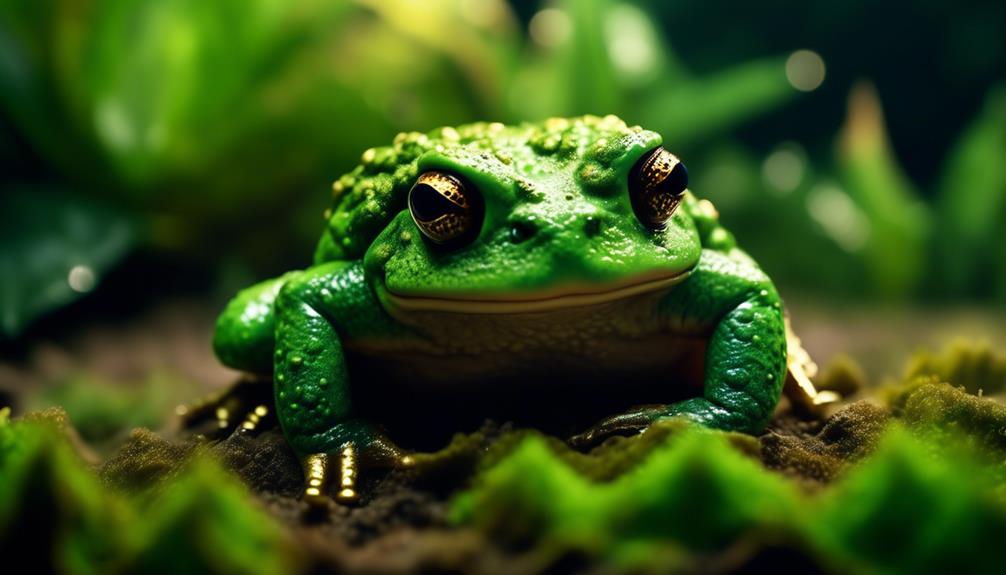
In the realm of traditional Oriental medicine, the Asiatic Toad’s revered status stems from its venom, known as chan-su, which possesses potent medicinal properties. Toad venom has been dried and used in various remedies for centuries. It is believed to have antimicrobial, anti-inflammatory, and analgesic properties.
In traditional Chinese medicine, it is used to treat ailments such as cancer, heart disease, and skin disorders. Recent scientific research has also shown interest in the medicinal potential of toad venom. Studies have identified bioactive compounds in the venom, including bufadienolides, which have demonstrated anticancer and cardiotonic effects.
Additionally, an antimicrobial peptide derived from toad venom has been patented. While more research is needed to fully understand and harness the therapeutic benefits of toad venom, its long-standing reputation in traditional medicine speaks to its potential as a valuable source of medicinal compounds.
Dried Toad Skins as Remedies
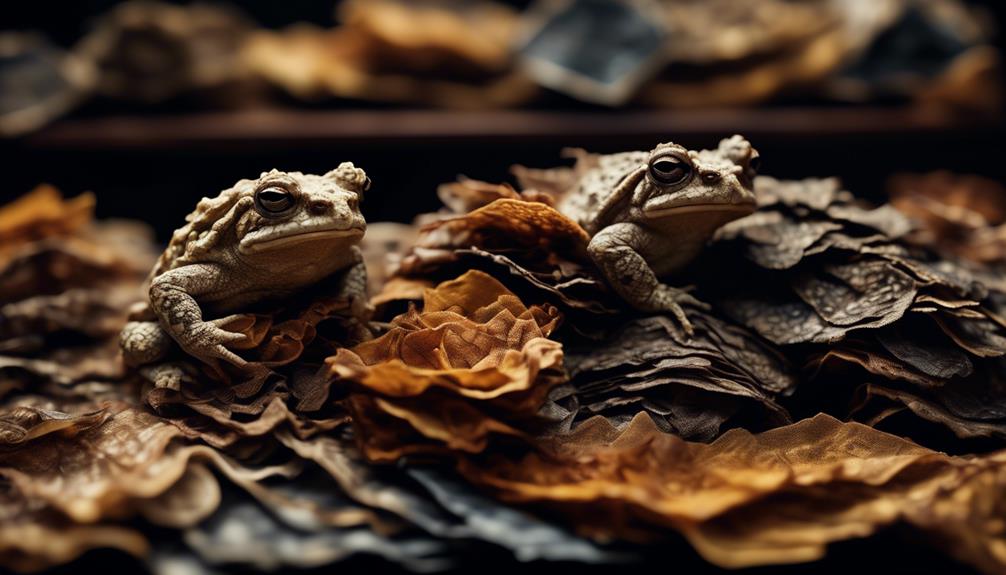
Dried toad skins have been utilized for their therapeutic properties in traditional medicine for centuries. These remedies have gained popularity due to their potential health benefits.
Here are some intriguing facts about dried toad skins as remedies:
- Traditional Use:
- In traditional Oriental medicine, dried toad skins are prescribed for various ailments such as respiratory disorders, skin diseases, and pain relief.
- They are believed to have anti-inflammatory, analgesic, and antimicrobial properties.
- Modern Research:
- Western medical science has shown interest in the medicinal potential of dried toad skins.
- Active compounds, such as antimicrobial peptides, have been extracted from the toad and patented for further study and development.
The use of dried toad skins as remedies highlights the fascinating integration of traditional and modern medicine in exploring the therapeutic properties of natural substances.
Antimicrobial Peptide Extraction
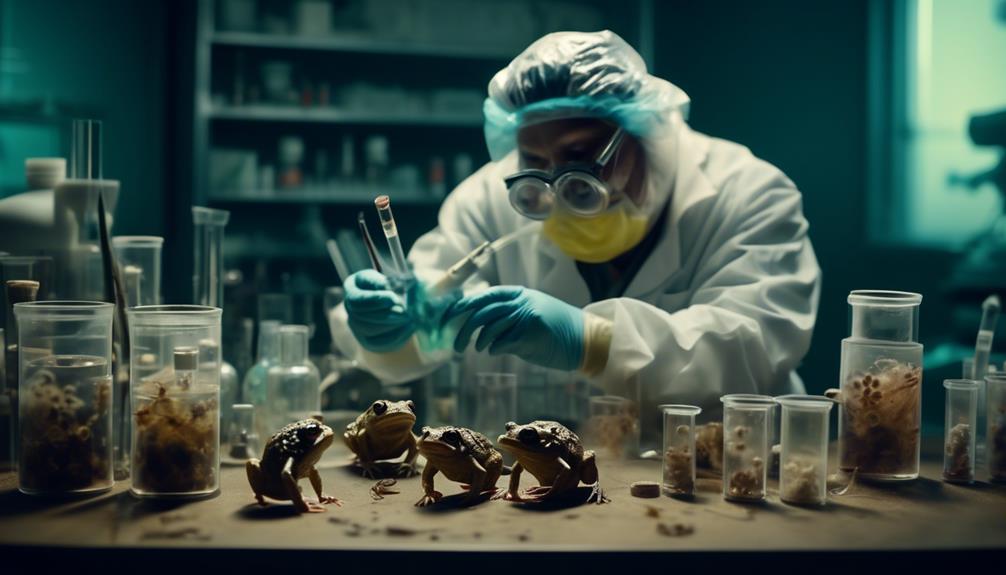
The exploration of the medicinal potential of dried toad skins extends beyond traditional Oriental medicine, as the extraction of antimicrobial peptides from these skins has garnered interest in Western medical science. Antimicrobial peptides are naturally occurring compounds that possess broad-spectrum antimicrobial activity against bacteria, fungi, and even some viruses. These peptides are of particular interest in the field of medicine due to the rise of antibiotic resistance and the need for new antimicrobial agents.
Researchers have discovered that the Asiatic toad (Bufo gargarizans) produces a variety of antimicrobial peptides in its skin, which can be extracted and studied for their therapeutic potential. The extraction process involves isolating and purifying these peptides from the dried toad skins, and subsequent testing to evaluate their efficacy against various pathogens.
The antimicrobial peptides derived from toad skins show promise as potential alternatives to conventional antibiotics and may contribute to the development of new treatments for infectious diseases.
Interest From Western Medical Science

Research on the medicinal properties of the Asiatic toad has attracted significant interest from the field of Western medical science. This fascination stems from the potential therapeutic benefits that the toad’s venom and dried skin may offer. Here are some reasons why Western medical science has taken an interest in this remarkable amphibian:
- Potential Cancer Treatment:
- Toad venom contains substances that show promise in combating cancer cells.
- Research is being conducted to explore the effectiveness of these compounds as anticancer agents.
- Analgesic Properties:
- The venom of the Asiatic toad possesses analgesic properties that may provide relief from pain.
- Scientists are investigating the mechanisms behind this pain-relieving effect to develop new pain management strategies.
Importance in Traditional Medicine
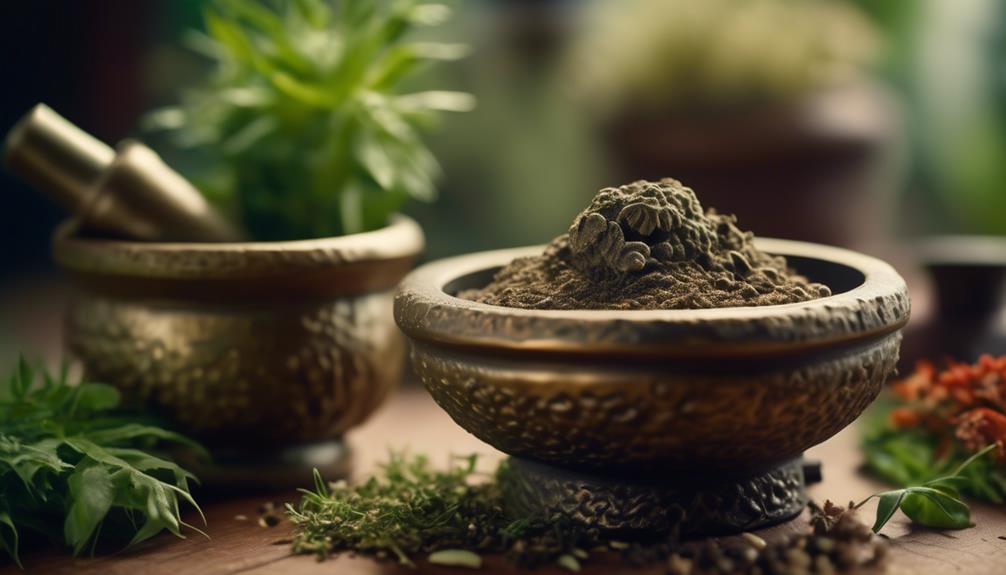
Traditional Oriental medicine has long recognized the Asiatic toad’s significant role and medicinal properties. The toad venom, known as chan-su, has been used in traditional remedies for various ailments. Dried toad skins are prescribed as remedies, and an antimicrobial peptide has been extracted from the toad and patented for its potential medical applications. The importance of the Asiatic toad in traditional medicine is evident in the following table:
| Traditional Medicinal Uses | Effects |
|---|---|
| Treatment of heart diseases | Positive |
| Relief from pain and inflammation | Positive |
| Promotes blood circulation | Positive |
| Anti-cancer properties | Under investigation |
| Enhances immune system | Under investigation |
Western medical science has also shown interest in the Asiatic toad, further highlighting its significance in the field of medicine. The medicinal secrets of the Asiatic toad continue to intrigue researchers and hold promise for future medical advancements.
Toad Venom in Oriental Medicine
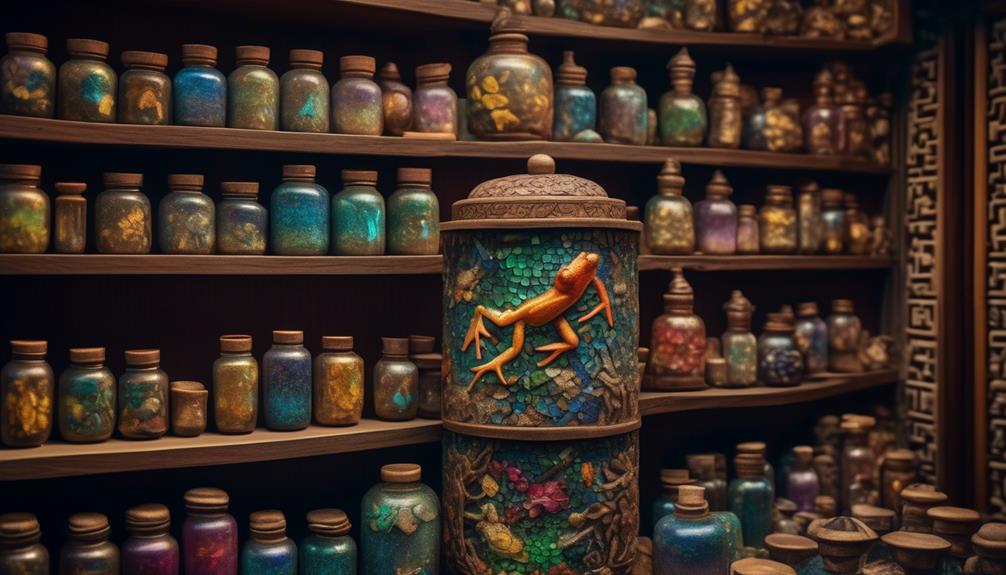
Toad venom, known as chan-su, plays a crucial role in Oriental medicine due to its potent medicinal properties. This venom, derived from the skin of the Asiatic toad, has been used for centuries in traditional Chinese medicine to treat various ailments.
Here are some key points about the use of toad venom in Oriental medicine:
- Traditional Uses:
- Toad venom is believed to have analgesic and anti-inflammatory properties, making it useful for relieving pain and reducing swelling.
- It is often used topically to treat skin conditions such as boils, abscesses, and eczema.
- In some cases, it is also used internally to treat ailments like heart disease, cancer, and respiratory disorders.
- Modern Research:
- Scientific studies have shown that toad venom contains various bioactive compounds that have potential therapeutic effects.
- Researchers are exploring its potential in the treatment of cardiovascular diseases, cancer, and neurological disorders.
Role of the Asiatic Toad
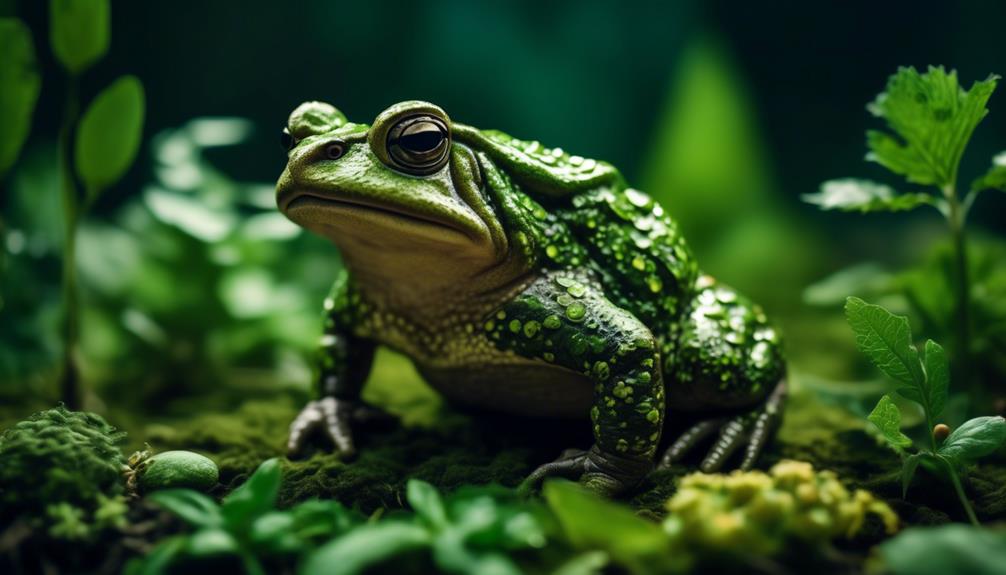
The Asiatic Toad, a common amphibian found in various regions of Asia, plays a significant role in traditional Oriental medicine and has garnered interest from Western medical science.
In traditional medicine, the toad venom (chan-su) secreted by the Asiatic Toad is believed to possess medicinal properties and is used to treat various ailments. Dried toad skins are also prescribed as remedies in certain traditional practices.
In recent years, Western medical science has shown interest in the Asiatic Toad and its potential therapeutic applications. Researchers have successfully extracted an antimicrobial peptide from the toad, which has been patented for its potential use in medicine.
This growing interest signifies the recognition of the Asiatic Toad as a valuable source of medicinal compounds and highlights the importance of further research and exploration in this field.
Medicinal Benefits of Toad Venom

As interest in the therapeutic potential of the Asiatic Toad grows, researchers have begun to explore the medicinal benefits of its venom. Toad venom, also known as chan-su, has long been used in traditional Oriental medicine for its healing properties. Recent scientific studies have supported its potential as a valuable medicinal substance.
Here are two sub-lists highlighting the medicinal benefits of toad venom:
Antimicrobial Properties
- Toad venom has shown antimicrobial activity against various bacteria and fungi, making it a potential source for new antibiotics.
- Research has identified specific compounds in toad venom that exhibit strong antimicrobial effects, offering promising prospects for the development of novel therapeutic agents.
Cardiovascular Effects
- Toad venom contains bioactive compounds that have shown potential in cardiovascular health.
- Studies have demonstrated the ability of toad venom to reduce blood pressure, inhibit platelet aggregation, and improve blood circulation, suggesting its potential use in the management of cardiovascular diseases.
Further research is needed to fully understand the mechanisms of action and potential therapeutic applications of toad venom.
Toad Venom in Traditional Remedies
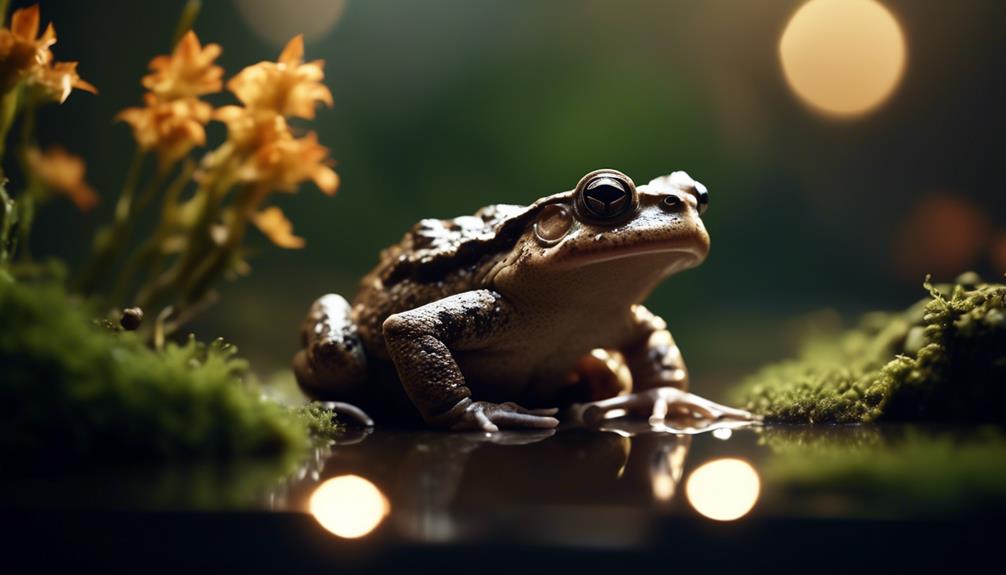
Used for centuries in traditional Oriental medicine, toad venom, also known as chan-su, has been a key ingredient in various remedies due to its potent medicinal properties.
Traditional healers have utilized toad venom in the treatment of a wide range of ailments, including skin conditions, respiratory disorders, and cardiovascular diseases. Toad venom is believed to possess anti-inflammatory, analgesic, and antimicrobial properties, making it a valuable component in traditional remedies.
In these remedies, the venom is typically dried and then either applied topically or ingested in small doses. However, it is important to note that the use of toad venom in traditional remedies should be approached with caution, as improper handling or dosage can lead to adverse effects.
With the growing interest in natural remedies, toad venom continues to be a subject of study in both traditional medicine and modern scientific research.
Medicinal Uses of Dried Toad Skins
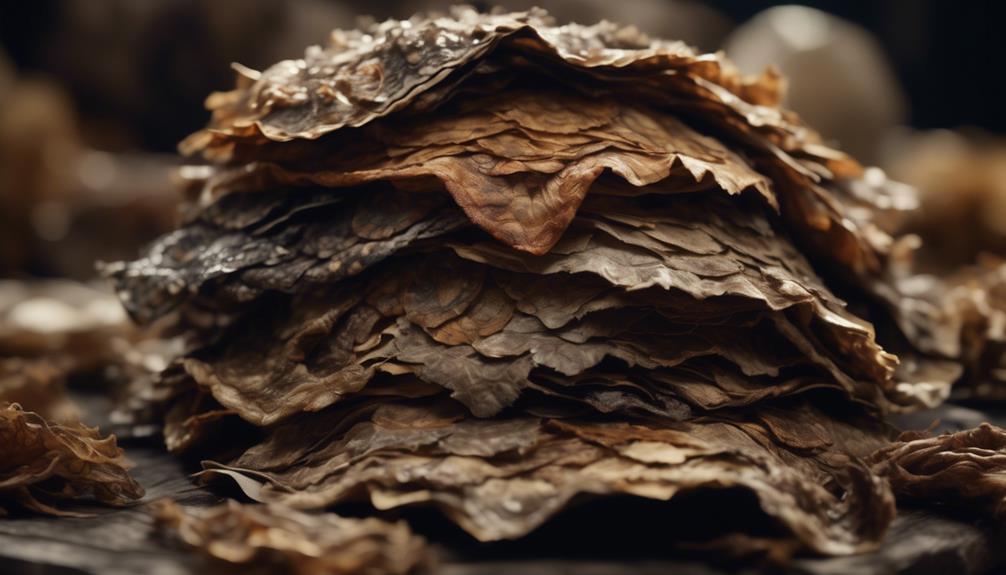
Dried toad skins have long been employed in medicinal practices, harnessing their therapeutic properties for various ailments. Here are some of the medicinal uses of dried toad skins:
- Traditional Oriental Medicine:
- Dried toad skins are used in traditional Oriental medicine to treat conditions such as heart diseases, skin disorders, and respiratory ailments.
- They are believed to have anti-inflammatory and analgesic properties, making them effective in relieving pain and reducing inflammation.
- Toad skins are also used to strengthen the immune system and improve overall well-being.
- Modern Medical Research:
- Western medical science has shown interest in the medicinal potential of dried toad skins.
- Studies have focused on extracting bioactive compounds from the skins, such as antimicrobial peptides, which have shown promise in combating bacterial and fungal infections.
- Ongoing research aims to explore the potential of dried toad skins in developing new drugs and therapeutic treatments.
Dried toad skins continue to be a fascinating subject of study, bridging the gap between traditional medicine and modern scientific research.
Patented Antimicrobial Peptide
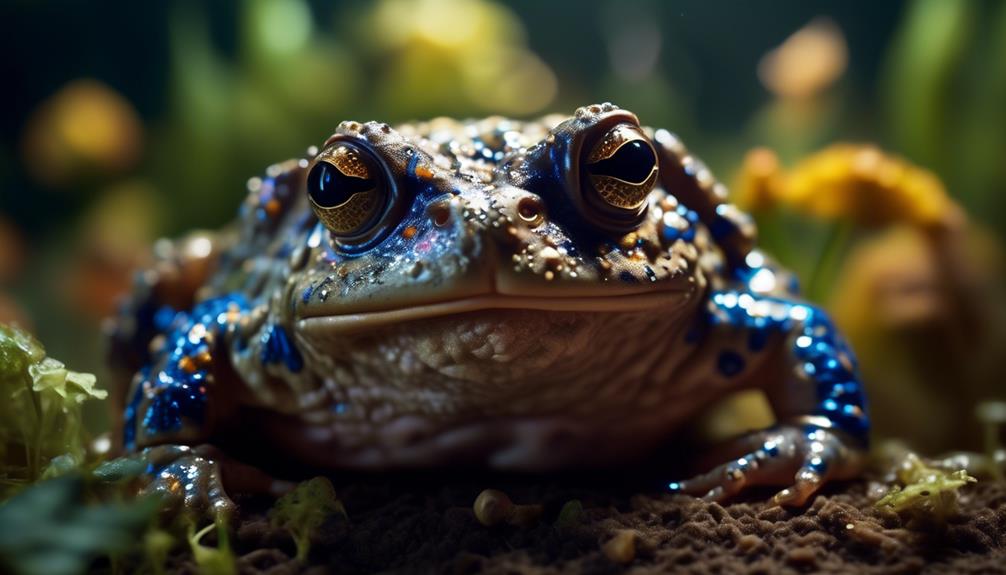
Continuing the exploration of the medicinal potential of dried toad skins, current research has led to the development and patenting of an antimicrobial peptide derived from these unique amphibian specimens. This breakthrough in scientific research has opened up new possibilities for combating microbial infections.
The antimicrobial peptide extracted from the Asiatic toad exhibits potent antimicrobial activity against a wide range of bacteria and fungi, making it a promising candidate for the development of novel antimicrobial drugs. The peptide acts by disrupting the cell membranes of microorganisms, leading to their destruction. Furthermore, it has shown low toxicity towards mammalian cells, indicating its potential as a safe and effective treatment option.
The patenting of this antimicrobial peptide marks a significant milestone in the field of medicine and highlights the immense therapeutic potential of the Asiatic toad.
Toad’s Role in Traditional Oriental Medicine
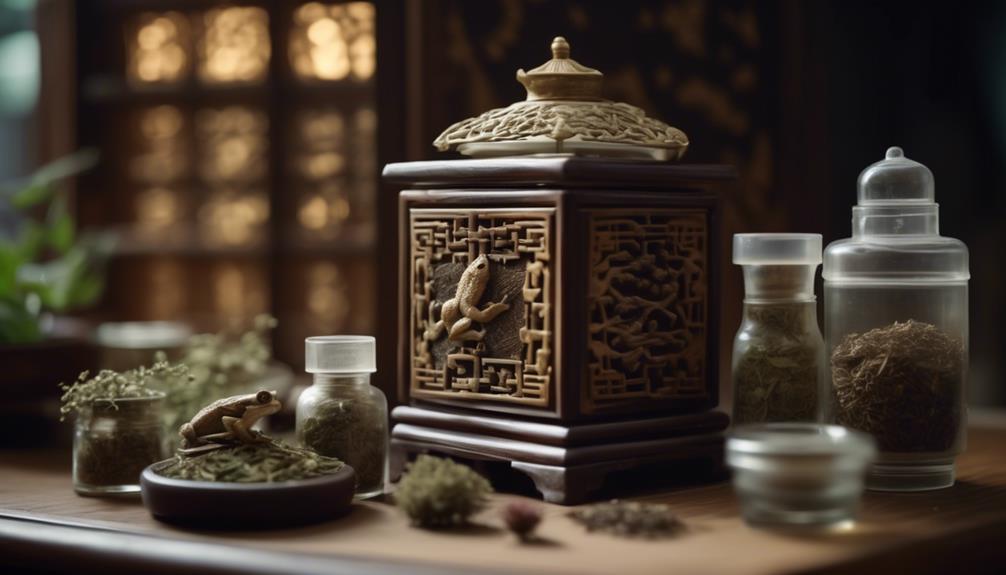
The Asiatic toad plays a vital role in traditional Oriental medicine due to its medicinal properties and the use of its venom, known as chan-su. Here are some key points about the toad’s role in traditional Oriental medicine:
- Medicinal Properties:
- Toad venom, or chan-su, is believed to have various therapeutic effects in traditional Oriental medicine.
- It is used to treat conditions such as heart diseases, skin ailments, and certain types of cancer.
- Chan-su is also used as a painkiller and anti-inflammatory agent.
- Traditional Remedies:
- Dried toad skins are prescribed as remedies for a wide range of ailments.
- These remedies are believed to have detoxifying, cooling, and purging effects on the body.
- Toad-based remedies are often used in combination with other herbal ingredients to enhance their efficacy.
The toad’s role in traditional Oriental medicine has attracted interest from both traditional practitioners and Western medical science, highlighting its significance in the field of medicine.
Western Medical Science and the Asiatic Toad

Given its significant role in traditional Oriental medicine, the Asiatic toad has also captured the attention of Western medical science. The toad’s venom, known as chan-su, has long been used in traditional medicine for its medicinal properties. However, it is only recently that Western medical science has started to explore the potential benefits of the toad and its venom.
Researchers have extracted an antimicrobial peptide from the toad, which has shown promise in fighting against certain types of bacteria and fungi. In fact, this peptide has been patented for its potential use in developing new antibiotics.
The toad’s skin has also been studied for its potential therapeutic effects, with dried toad skins being prescribed as remedies for various ailments.
Frequently Asked Questions
What Is the Role of the Asiatic Toad in Traditional Oriental Medicine?
The Asiatic toad plays an important role in traditional Oriental medicine. Its venom, known as chan-su, has medicinal properties. Dried toad skins are prescribed as remedies for various ailments. Western medical science has also shown interest in the toad.
What Are the Medicinal Benefits of Toad Venom?
Toad venom, known as chan-su, has medicinal properties and is used in traditional Oriental medicine. It is prescribed as a remedy for various ailments and has attracted interest from Western medical science.
How Are Dried Toad Skins Used as Remedies?
Dried toad skins are used as remedies in traditional Oriental medicine. They are prescribed for various ailments and have been found to have medicinal properties. Western medical science has also shown interest in the potential benefits of toad skin extracts.
What Is the Process of Extracting the Antimicrobial Peptide From the Toad?
The process of extracting the antimicrobial peptide from the Asiatic toad involves isolating the venom glands, extracting the venom, purifying it through various techniques such as chromatography, and then identifying and isolating the specific peptide of interest.
How Has Western Medical Science Shown Interest in the Asiatic Toad?
Western medical science has shown interest in the Asiatic toad due to its potential medicinal properties. Researchers have extracted an antimicrobial peptide from the toad and patented it, highlighting its potential in the field of medicine.
What are some similarities and differences between the Asiatic Toad and the Midwife Toad in terms of their medicinal and parenting secrets?
The Asiatic Toad and the Midwife Toad both possess unique medicinal secrets. However, the Midwife Toad is known for its enigmatic midwife toad parenting masters, which involve the male carrying the fertilized eggs on his back. The Asiatic Toad, on the other hand, does not exhibit this behavior, making it a key difference between the two species.
Conclusion
In conclusion, the Asiatic toad, Bufo gargarizans, holds remarkable potential in traditional Oriental medicine and Western medical science.
Its venom, known as chan-su, possesses medicinal properties that have been utilized for various ailments. Dried toad skins are prescribed in certain medicinal practices, and an antimicrobial peptide extracted from the toad’s body has been patented.
The toad’s significance extends beyond its ecological role, highlighting its remarkable therapeutic applications.

